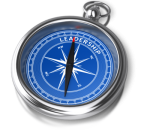[vc_row][vc_column][vc_row_inner][vc_column_inner width=”1/4″][vc_column_text css=”.vc_custom_1414069970540{padding-top: 10px !important;}”] [/vc_column_text][/vc_column_inner][vc_column_inner width=”3/4″ css=”.vc_custom_1424634364471{padding-top: 5px !important;}”][vc_column_text]To be a leader in the Digital Era requires complementing and extending traditional leadership competencies with a new set of knowledge, skills, attitudes and behaviours that reflect today’s realities and embrace tomorrow’s possibilities. Making the necessary changes will require both rational and affective shifts among leaders, starting with the recognition that digital technologies are now the norm. It’s a brave new world – even if they want the old one back![/vc_column_text][/vc_column_inner][/vc_row_inner][vc_column_text]
[/vc_column_text][/vc_column_inner][vc_column_inner width=”3/4″ css=”.vc_custom_1424634364471{padding-top: 5px !important;}”][vc_column_text]To be a leader in the Digital Era requires complementing and extending traditional leadership competencies with a new set of knowledge, skills, attitudes and behaviours that reflect today’s realities and embrace tomorrow’s possibilities. Making the necessary changes will require both rational and affective shifts among leaders, starting with the recognition that digital technologies are now the norm. It’s a brave new world – even if they want the old one back![/vc_column_text][/vc_column_inner][/vc_row_inner][vc_column_text]
To be a leader in the Digital Era requires a mindset shift – that is, a change in the mental approach to how we see and engage with things, both abstract and real. It is more than a shift in the way we think, however, since thinking is very much about reasoning and judging. It also encompasses feeling.
To accept that digital technologies are now the norm, and to adapt to and adopt them, requires this fundamental mindset shift. I would not go amiss to say that we need to be mindful, that is “take thought or care” about these digital technologies, rather than ignore them in the hopes they will go away. In many ways the mindset shift can only be accomplished by conscious and deliberate action if one is to move forward.
According to Courtney Hunt, to be a leader in the Digital Era one must continue to employ established best practices while incorporating new and different elements that reflect the realities of today, as well as being able to adapt to future unknowns. That is, it is very much about managing and doing old things with new technologies, which translates to working in new ways.
The technologies that gave rise to the Digital Era have created challenging situations for leaders who must learn to manage them, no longer in a command and control vein, as was the wont in the Industrial Era, but in an open and collaborative manner. Some of the biggest challenges include, and are definitely not limited to:
- Dealing with loss of control as customers and others talk about an organization and its brand(s) on social media channels without their ‘permission.’
- Accepting that social technologies cannot be a bolt-on strategy, or disregarded, for how to do business in the Digital Era. Instead these technologies must be integrated into business processes, both external and internal.
- Determining the extent to which leaders themselves should be directly engaged with social and digital technologies for both internal and external communication.
- Developing a vision and strategy for successful digital transformation.
- Recognising and accepting their responsibilities as guardians of the enterprise to pursue new opportunities whilst addressing challenges and managing risks.
It is incumbent on leaders of all organisations to have at least a beginner’s level knowledge of the technologies and opportunities they provide in order to be able to make well-informed and appropriate decisions on behalf of the stakeholders in their business ecosystem (shareholders, employees, customers, suppliers, etc.).
To address these challenges, leaders have to adopt new skills, characteristics and competencies such as collaboration (especially virtual), openness, interdependence, sense-making, new media literacy and innovation to name a few. However, to successfully use these skills they need to be clear on the purpose and vision of their organisation and then use them, in conjunction with established best practices, to develop strategies that will take them forward in the Digital Era.[/vc_column_text][/vc_column][/vc_row]





